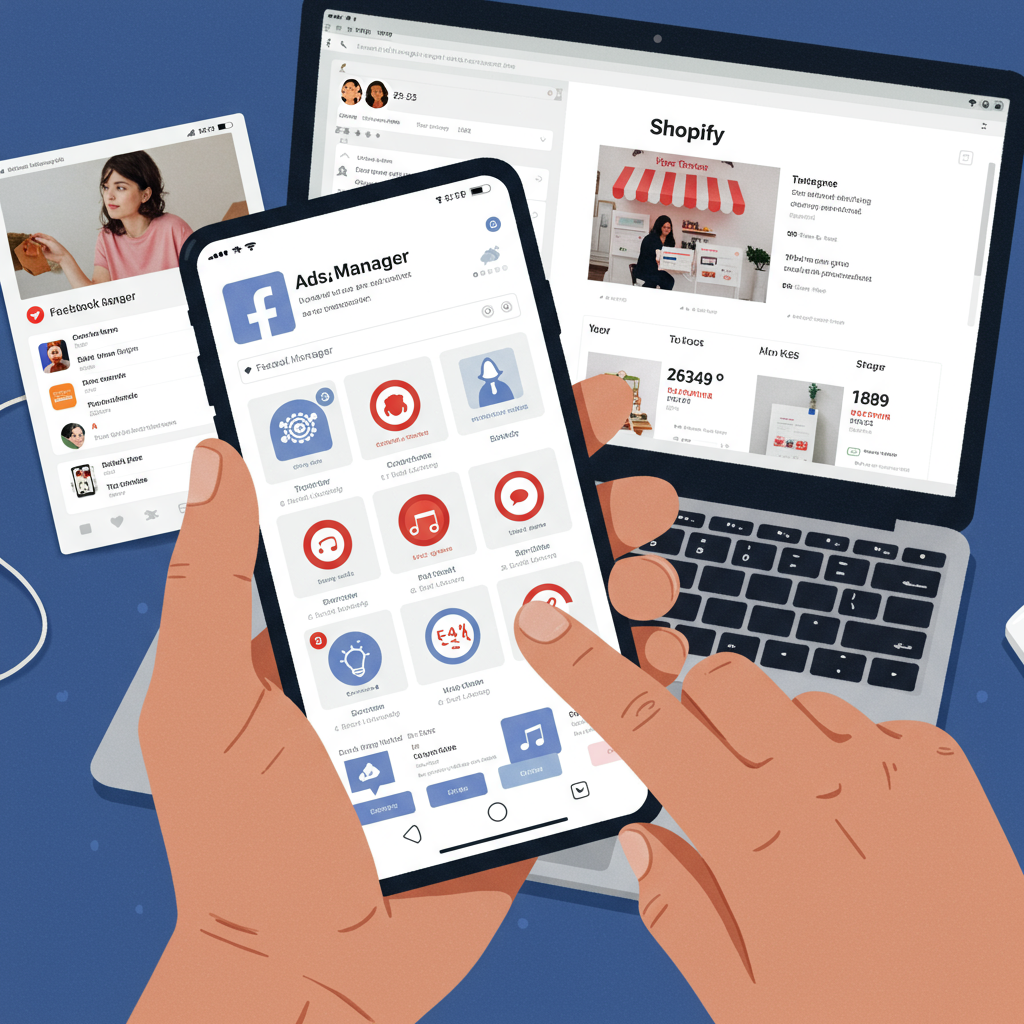Unlock the full potential of your ad spend by reaching the right customers on Facebook and Instagram.
As a Shopify merchant, I understand the constant quest for more sales and better customer acquisition. We pour our hearts into our products, but getting them in front of the right people can feel like a monumental challenge.
That’s where Facebook and Instagram ads come into play. They offer an unparalleled opportunity to connect with potential customers, but only if you know how to target effectively.
Many merchants simply ‘boost’ posts or run broad campaigns, often leading to wasted ad spend. My goal today is to walk you through the precise strategies I use to target audiences for Shopify stores, ensuring every dollar works harder for you.
The foundation of any successful Facebook ad campaign for your Shopify store is the Facebook Pixel. If you haven’t installed it yet, stop reading and do that first! It’s crucial for tracking website activity and building audiences.
The Pixel allows us to understand who visits our store, what products they view, what they add to cart, and what they purchase. This data is gold for targeting.
Once your Pixel is firing correctly, we can dive into the exciting world of audience targeting. There are several powerful ways to define who sees your ads.
First, let’s talk about core targeting options: demographics, interests, and behaviors. These are the broad strokes that help us define our ideal customer.
Demographic targeting allows us to specify age, gender, location, and language. For instance, if you sell skincare products, you might target women aged 25-55 in specific high-income zip codes.
Location targeting is incredibly precise, allowing you to target by country, state, city, or even a specific radius around a physical address. This is great for local businesses or those with regional shipping restrictions.
Interest targeting is where things get really powerful. You can target people based on their stated interests, pages they like, and topics they engage with on Facebook and Instagram.
Think broadly at first. If you sell pet supplies, you might target ‘dogs,’ ‘cats,’ ‘pet owners,’ or ‘animal welfare.’ These are broad but a good starting point.
Then, get more specific. Consider complementary interests. If you sell running shoes, target people interested in ‘marathons,’ ‘fitness apps,’ ‘healthy eating,’ or specific running brands.
You can also target competitors’ audiences, though not directly by name. Instead, think about what interests someone who buys from your competitor might have. What other brands do they follow? What magazines do they read?
Behavioral targeting leverages data Facebook collects about users’ online and offline activities. This includes purchase behavior, digital activities, travel preferences, and more.
For example, you can target ‘Engaged Shoppers’ – people who have clicked on a ‘Shop Now’ button in the past week. This is a highly valuable behavior for e-commerce.
You can also target people based on their device usage, such as those who access Facebook primarily from a mobile device, or even specific smartphone brands.
Now, let’s move to the truly advanced and often most profitable targeting methods: Custom Audiences. These allow you to re-engage people who have already shown interest in your business.
The most common Custom Audience is ‘Website Visitors.’ You can create audiences of everyone who visited your site, or segment them further.
For example, you can target people who visited specific product pages but didn’t purchase, or those who added items to their cart but abandoned it. These are high-intent audiences.
Another powerful Custom Audience is your ‘Customer List.’ Upload your email list or phone numbers, and Facebook will match them to user profiles. This is fantastic for re-engaging past customers or excluding them from prospecting campaigns.
Engagement Custom Audiences are also incredibly valuable. These include people who have engaged with your Facebook or Instagram page, watched your videos, or interacted with your lead forms.
If someone watched 75% of your product demo video, they’re clearly interested! You can create an audience of these viewers and show them a direct offer.
Finally, we have Lookalike Audiences. These are arguably the most powerful tool for scaling your ad campaigns. Facebook finds new people who are similar to your best existing customers or website visitors.
You create a Lookalike Audience based on a ‘source’ audience, such as your ‘Purchasers’ Custom Audience or your ‘Top 5% Website Visitors’ Custom Audience.
Facebook’s algorithm then analyzes the characteristics of your source audience and finds millions of other users with similar traits, interests, and behaviors. This is how you find new, high-quality prospects.
I typically start with a 1% Lookalike Audience (the most similar) and then expand to 2-5% or even 10% as I scale, always monitoring performance.
Don’t forget about exclusions! Always exclude your existing customers from prospecting campaigns to avoid wasting money showing ads to people who have already bought from you.
A/B testing is paramount. Test different audience segments against each other. You might find that a Lookalike Audience based on video viewers performs better than one based on website visitors for a specific product.
Always ensure your ad creative (images, videos, copy) is highly relevant to the audience you’re targeting. A generic ad won’t resonate as well as one tailored to their specific interests.
What do you think about this article? Is there anything you’d like me to elaborate on?
By meticulously applying these targeting strategies, you’ll move beyond guesswork and start running highly effective Facebook and Instagram ad campaigns that drive real, measurable results for your Shopify store.
Remember, it’s an ongoing process of testing, learning, and refining. The more you understand your audience and leverage Facebook’s tools, the more successful your ad spend will be.






